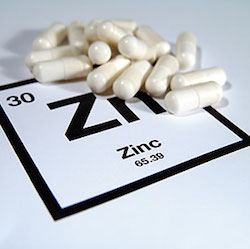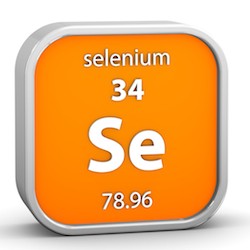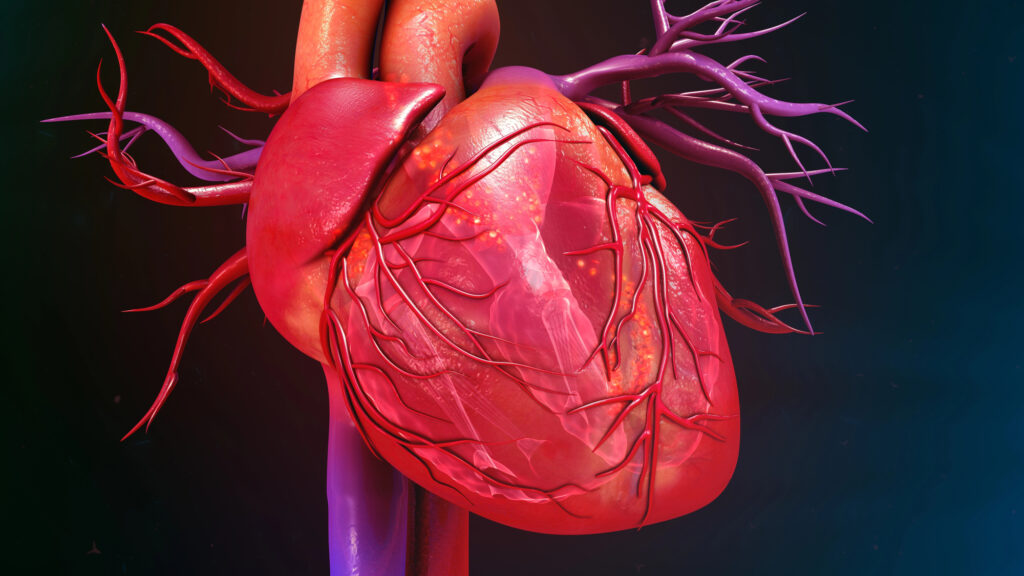Adequate nutrition is essential for the normal functioning of the immune system, although some nutrients are more important than others when it comes to defending the body from infection.[1] Among the essential minerals, deficiencies in either zinc or selenium can greatly increase one’s susceptibility to infection and may worsen the course of any infection when it does occur. In fact, a study of patients admitted to a hospital’s infectious disease ward revealed that zinc and selenium were among the most prevalent micronutrient deficiencies, finding that two thirds of the patients were deficient in zinc, and nearly half were deficient in selenium.[2]
Widespread evidence from laboratory, epidemiological, and clinical investigations further suggest that infections and other disease conditions can further deplete the body’s supply of these minerals and worsen the prognosis.[3],[4],[5],[6]
Herein, we take a look at the mechanisms by which zinc and selenium affect immune function, epidemiological data, outcomes of clinical interventions, and populations at greatest risk for deficiency.
Zinc
Zinc promotes immunity through direct, indirect, and antioxidant mechanisms,[7],[8],[9],[10]and a deficiency state is well documented to increase one’s susceptibility to opportunistic infections.2,[11],[12],[13],[14] In vitro studies have also shown that zinc and its complexes have antiviral effects, and can inhibit the replication of many different respiratory viruses, including influenza, rhinovirus, and respiratory syncytial virus.[15],[16],[17],[18],[19]
Zinc is essential for the structure and activity of thymulin, a hormone that regulates the production and maturation of T-lymphocytes.[20],[21],[22],[23] Prolonged zinc deficiency leads to thymic atrophy, a reduction in T-cell numbers, and impaired immunity.[24],[25]As discussed below, zinc supplementation may help prevent and/or reverse these changes.

Zinc deficiency is thought to contribute to the incidence and severity of respiratory tract infections in children. Randomized controlled trials (RCT), for example, have shown that supplemental zinc can reduce the risk of acute lower respiratory tract infections (ALRTI).[26],[27] In an RCT of infants and preschool children, supplemental zinc (10 mg zinc gluconate daily for 120 days) reduced the risk of acute lower respiratory tract infections (ALRTI) by 45%.[26] The children who received zinc supplements also recovered more quickly from infections. In another RCT, looking at children under the age of five, zinc supplementation (10 mg zinc gluconate daily for 60 days) reduced the incidence of ALRTI by more than 50% after six months.[27] The number of episodes of ALRTI and severe ALRTI were significantly lower in the zinc group compared to the placebo group (20.8% vs. 45.8%, and 21.7% vs. 58.3%, respectively).
Zinc deficiency not only compromises immunity, but it shifts the immune system toward an inflammatory state that can predispose the body for damage to the lungs and other organs.[28],[29]Zinc supplementation has been shown to ameliorate lung damage in animal models of respiratory infections.[7],[30]
Zinc deficiency is also associated with poor outcomes in patients with sepsis.[31],[32],[33]In one study, 20 out of 22 septic patients had below-normal plasma zinc concentrations, and there was a correlation between lower plasma zinc concentrations and greater disease severity.30 In another study, both zinc and selenium were significantly lower in patients with sepsis than in controls, and the low levels of these nutrients were associated with elevated levels of inflammatory markers.[34]
Zinc deficiency has been observed in 30% or more of individuals over the age of 60. It contributes to the age-related decline in immune system function known as immunosenescence, which in turn increases the risk and severity of infections in the elderly.[35],[36],[37],[38],[39],[40]Animal and human studies suggest that various measures of immunosenescence, including thymulin activity and peripheral immune function, can be corrected by simply supplementing with zinc.[41],[42],[43],[44],[45],[46]
Similarly, although white blood cells (WBCs) collected from elderly individuals produce less interferon (IFN) than those from young adults, the IFN-producing capacity may not be permanently lost. When WBCs from the elderly were incubated with physiologic concentrations of zinc, they produced IFN in amounts comparable to those from the younger subjects.[47]
Clinically, we also see the impact of zinc on immune function, particularly in the elderly. In one randomized, double-blind, placebo-controlled trial, study participants were given a daily multivitamin and mineral supplement, including zinc, for one year.[48] Individuals who developed normal zinc levels had a lower incidence and duration of pneumonia, and a reduced need for antibiotics, compared to subjects with low serum zinc concentrations. Another study showed that zinc supplementation reduced the risk of pneumonia by 64% in critical care (trauma) patients on ventilators.[49]
In addition to the well-documented effects of zinc on infections, population studies have shown that the maintenance of adequate serum zinc concentrations is associated with a reduced risk of mortality from all causes.[50],[51],[52]
Who is at risk for zinc deficiency?
Zinc is found in many different foods but it is particularly concentrated in meat, poultry, and shellfish.[53] As a result, vegetarians, and especially vegans who consume no animal products, have an increased risk of zinc deficiency, particularly if they also avoid nuts and seeds which contain relatively high levels of zinc.[54],[55],[56] The zinc present in plant-based foods is also less bioavailable due to the presence of phytates, which strongly bind zinc and prevent its absorption.[57],[58],[59]
Obese and diabetic patients typically have lower levels of zinc than healthy individuals,[60],[61],[62],[63]along with an increased risk for respiratory tract infections.[64],[65],[66]In one study of young, obese females, at baseline, multiple inflammatory markers were significantly higher in the obese than the non-obese women.[67] However, levels of both high sensitivity C-reactive protein (hs-CRP) and interleukin (IL)-6 were significantly decreased by zinc supplementation (in the obese women), suggesting that zinc may have a favorable effect on obesity-related inflammation. Zinc also has positive effects on glucose metabolism and insulin resistance in diabetic and prediabetic patients.[68],[69],[70],[71],[72]
Zinc levels decline with age as a result of physiopathological changes of various kinds.[73] Intestinal malabsorption,[74],[75] inflammatory bowel disease,[76] autoimmune disease,[77] kidney or liver disease,[78],[79],[80] cancer or cancer treatments,[81] and the use of medications (including antibiotics, statins, and blood pressure medications)[82],[83]can all contribute to zinc deficiency. Individuals with celiac disease, including those consuming gluten-free (GF) diets, may also be at risk for a deficiency of zinc and several other nutrients.[84] One study reported that 67% of newly diagnosed adult patients with celiac disease had suboptimal serum zinc levels,[85] while another study observed that 40% of individuals consuming long-term GF diets still were deficient in zinc.[86]
Selenium

Adequate selenium is also essential for a normal, healthy immune response.[87],[88],[89],[90],[91] Among the enzymes most impacted by selenium status is glutathione peroxidase 1 (GPX1), a selenium-containing protein with known antiviral properties. GPX1 decreases oxidative stress by utilizing glutathione to reduce hydrogen peroxide to water, thereby decreasing the damaging effects of this reactive oxygen species (ROS) on immune cells.[92],[93],[94],[95]The reduction of ROS also may have the effect of reducing viral virulence, as increased ROS can lead to further viral mutations.[96] In states of selenium deficiency, the amount of GPX1 can drop to a mere 10% of normal levels.[97] This impairs the immune response and allows viruses to replicate freely.[98],[99],[100],[101]
Selenium deficiency has been extensively studied in China, which has populations ranging from the lowest to the highest selenium levels in the world.[102] One of the selenium-deficient regions in China is Keshan county, which is the locus of a serious cardiomyopathy that has been dubbed Keshan disease.[103],[104] A study of the etiology of the disease showed that selenium deficiency produces extreme oxidative stress within cells.[105],[106]This state enables otherwise benign strains of Coxsackie virus to mutate to highly pathogenic forms, which infect the heart muscle, causing the disease.[107] As noted by the author of one of these studies: “What the results seemed to say was that one could be immersed in a sea of benign Coxsackie virus without any apparent ill effects until one suffered a decline in selenium to the point that the virus would exhibit its cardiovirulent properties.”[99] Selenium supplementation not only boosted antiviral immunity, but prevented the virus from mutating to a pathogenic form.[99],[100]
Selenium deficiency has been shown to increase one’s susceptibility to influenza, as well as to hepatitis B, hepatitis C, West Nile virus, and hantavirus infections.[108],[109],[110],[111],[112] In a mouse model of influenza, the mortality of the selenium-deficient mice was 75%, whereas the mortality of selenium-supplemented mice was reduced to 25%.[113] Selenium deficiency also was shown to produce more severe lung pathology in animals with influenza infections.[114],[115],[116]
Low selenium levels not only increase the risk of infections, but also contribute to the emergence of new and more virulent flu strains.[117] In fact, children with the highly infectious H1N1 subtype of influenza were found to have low blood levels of selenium.[118] There was a 45% decrease in GPX1 activity and a 245% increase in CRP levels in H1N1-infected children compared to a control group,[118] suggesting that virus-induced oxidative stress plays a key role in the pathology of the disease.[119] Adding to these findings, a population study found that persons living in regions with low selenium levels in China had a four- to fivefold higher death rate from COVID-19 than those in areas with high selenium levels.[120]
Elderly individuals are particularly susceptible to nutrient deficiencies, including selenium, which can contribute to the risk for respiratory infections. The effect of selenium and zinc on immunity was examined in a RCT of 725 institutionalized elderly patients from 25 geriatric centers in France.91 The study participants received an oral daily capsule containing one of the four following preparations: (1) zinc sulfate and selenium sulfide (providing 20 mg of zinc and 100 µg of selenium)—the trace element (T) group; (2) ascorbic acid (120 mg), beta carotene (6 mg=1000 retinol equivalents), and α-tocopherol (15 mg)—the vitamin (V) group; (3) trace element and vitamin supplements—the vitamin and trace element (VT) group; or (4) placebo.
After 6 months of supplementation, there was a significant increase in serum nutrient values in the supplemented groups. The percentage of selenium-deficient patients decreased from 79% to 5% and from 81% to 9% in the T and VT groups, respectively. The proportion of patients who remained free from respiratory tract infections was greater in groups that received selenium and zinc (T or VT groups) than in those who did not. Also, the antibody response to influenza vaccine was better in the T and VT groups than in the V or placebo groups. The results suggest that zinc and selenium supplementation improves the humoral response to influenza vaccination in elderly people.
Another RCT assessed whether selenium supplementation would improve vaccine efficacy in otherwise healthy UK adults who were given a live attenuated polio vaccine.[90] Sixty-six subjects with the lowest plasma selenium concentrations (<1.2 μmol/L, about 60% of the total population screened) were sequentially allocated to one of three groups, to receive one capsule containing either 50 or 100 µg selenium per day (as sodium selenite) or a placebo for 15 weeks. All subjects received an oral live attenuated poliomyelitis vaccine after the first six weeks. Blood was collected and used to measure T-cell proliferation and the production of cytokines in vitro. The supplemented groups had a significantly greater production of IFN, an earlier peak T-cell proliferation, and an increase in T helper cell numbers, suggesting a stronger immune response to the virus. Analysis of poliovirus RNA in fecal samples revealed that placebo-treated subjects had mutations of the attenuated poliovirus, but these were not apparent in the supplemented groups. This result suggests that selenium insufficiency increased the probability of generating poliovirus variants with new pathogenic potential.
Selenium deficiency is also implicated in the prevalence and severity of HIV.[121],[122] A multinational study of 270 treatment-naïve, HIV-positive adults showed that 53% were deficient in selenium, making it the most common micronutrient deficiency in this cohort.[123] Moreover, several studies have shown that low serum selenium concentrations are associated with a more severe HIV disease course and a higher mortality rate.[124],[125],[126]
An RCT was done to assess the effects of supplementation with 200 µg/day of high-selenium yeast in HIV-positive men and women.[127] Of the 450 participants who underwent screening, 262 initiated treatment and 174 completed a 9-month follow-up assessment. The serum selenium concentration increased significantly in the selenium-treated group. Greater selenium levels were associated with significantly decreased viral loads, which in turn correlated with increased CD4-positive cell counts in the supplemented group. These results suggest that selenium may be a valuable supportive nutrient for individuals with HIV.
Who is at risk for selenium deficiency?
The main dietary sources of selenium are Brazil nuts, seafood, meat, poultry, fish, eggs, and whole-grain bread.[128] Vegan, gluten-free, and low-protein diets provide suboptimal amounts of selenium.[129],[130],[131],[132],[133] Individuals with malabsorption or inflammatory bowel disease may also be deficient in this mineral.[134]
One’s selenium status also depends in part on the region in which one lives. Selenium deficiency is generally thought to be uncommon in the U.S.,[36],[135]but a study of Caucasian and African-American women living in Southern U.S. states found that the diets of more than 60% of the population were deficient in selenium.[136] Suboptimal intakes of zinc, copper, and vitamins C and E were also noted. The scientists concluded, “All women in this population reported dietary intakes of antioxidant vitamins and minerals below recommended values, conditions that could contribute to subsequent health risks unless nutrient-dense food choices and antioxidant supplementation are considered in their overall nutritional support.”
As mentioned previously, a study of patients admitted to a hospital’s infectious disease ward revealed that nearly half of the patients were deficient in selenium.[2] A recent review concluded that the typical diet is often not sufficient to meet the increased demands for micronutrients in infectious diseases, and that supplements containing selenium up to 200 µg per day may be indicated for individuals with viral infections, including HIV and influenza.[87]Further studies suggest that total selenium intakes (from diet and supplementation) greater than 300 µg per day should be avoided.[137]
Conclusion
Zinc and selenium deficiency can be added to the factors predisposing individuals to opportunistic infections, and may increase their severity or the risk of adverse outcomes if infections do occur. Zinc and selenium supplementation may be beneficial for many individuals, especially those with insufficient dietary intakes or with conditions that predispose to infections. This category includes individuals with diabetes, obesity, malabsorption, infections, or other comorbidities; and the elderly. Because deficiencies in multiple immune system nutrients have been reported throughout the population, multi-nutrient supplementation may be particularly helpful.
Marina MacDonald, MS, PhD completed her graduate work in nutrition at the University of Wisconsin (Madison) and the University of California (Davis). She conducted postdoctoral research in Metabolism and Endocrinology at the Howard Hughes Medical Institute (University of Washington, Seattle). Her experience in the biopharmaceutical industry includes product development, research, and discovery. Dr. MacDonald enjoys doing freelance writing and research in the fields of nutrition and physiology.
References:
[1] Calder PC, et al. Optimal nutritional status for a well-functioning immune system is an important factor to protect against viral infections. Nutrients. 2020 Apr 23;12(4):1181.
[2] Dizdar OS, et al. Nutritional risk, micronutrient status and clinical outcomes: a prospective observational study in an infectious disease clinic. Nutrients. 2016 Feb 29;8(3):124.
[3] Mocchegiani E, Muzzioli M. Therapeutic application of zinc in human immunodeficiency virus against opportunistic infections. J Nutr. 2000 May;130(5S Suppl):1424S-31S.
[4] Read SA, et al. The role of zinc in antiviral immunity. Adv Nutr. 2019 Jul 1;10(4):696-710.
[5] Eijelkamp BA, et al. Dietary zinc and the control of Streptococcus pneumoniae infection. PLoS Pathog. 2019 Aug 22;15(8):e1007957.
[6] Duncan A, et al. Quantitative data on the magnitude of the systemic inflammatory response and its effect on micronutrient status based on plasma measurements. Am J Clin Nutr. 2012 Jan 1;95(1):64-71.
[7] Wessels I, et al. Zinc as a gatekeeper of immune function. Nutrients. 2017 Nov 25;9(12):1286.
[8] Sapkota M, Knoell DL. Essential role of zinc and zinc transporters in myeloid cell function and host defense against infection. J Immunol Res. 2018 Oct 17;2018:4315140.
[9] Prasad AS, Bao B. Molecular mechanisms of zinc as a pro-antioxidant mediator: clinical therapeutic implications. Antioxidants (Basel). 2019 Jun 6;8(6):164.
[10] Gao H, et al. The role of zinc and zinc homeostasis in macrophage function. J Immunol Res. 2018 Dec 6;2018:6872621.
[11] Read SA, et al. The role of zinc in antiviral immunity. Adv Nutr. 2019 Jul 1;10(4):696-710.
[12] Eijelkamp BA, et al. Dietary zinc and the control of Streptococcus pneumoniae infection. PLoS Pathog. 2019 Aug 22;15(8):e1007957.
[13] Barnett JB, et al. Low zinc status: a new risk factor for pneumonia in the elderly? Nutr Rev. 2010 Jan;68(1):30-7.
[14] Yasuda H, Tsutsui T. Infants and elderlies are susceptible to zinc deficiency. Sci Rep. 2016 Feb 25;6:21850.
[15] te Velthuis AJW, et al. Zn(2+) Inhibits coronavirus and arterivirus RNA polymerase activity in vitro and zinc ionophores block the replication of these viruses in cell culture. PLoS Pathog. 2010 Nov 4;6(11):e1001176.
[16] Suara RO, Crowe JE. Effect of zinc salts on respiratory syncytial virus replication. Antimicrob Agents Chemother. 2004 Mar;48(3):783-90.
[17] Merluzzi VJ, et al. Evaluation of zinc complexes on the replication of rhinovirus 2 in vitro. Res Commun Chem Pathol Pharmacol. 1989 Dec;66(3):425-40.
[18] Khan NA, et al. Respiratory syncytial virus-induced oxidative stress leads to an increase in labile zinc pools in lung epithelial cells. mSphere. 2020 May 27;5(3):e00447-20.
[19] Tang Q, et al. The short form of the zinc finger antiviral protein inhibits influenza A virus protein expression and is antagonized by the virus-encoded NS1. J Virol. 2017 Jan 3;91(2):e01909-16.
[20] Prasad AS. Lessons learned from experimental human model of zinc deficiency. J Immunol Res. 2020 Jan 9;2020:9207279.
[21] Mitchell WA, et al. Thymic output, ageing and zinc. Biogerontology. Oct-Dec 2006;7(5-6):461-70.
[22] Di Silvestro RA, et al. Comparison of thymulin activity with other measures of marginal zinc deficiency. Biol Trace Elem Res. 2020 May 3:1-3
[23] Fraker PJ, King LE. Reprogramming of the immune system during zinc deficiency. Annu Rev Nutr. 2004;24:277-98.
[24] Beck FW, et al. Changes in cytokine production and T cell subpopulations in experimentally induced zinc-deficient humans. Am J Physiol. 1997 Jun;272(6 Pt 1):E1002-7.
[25] King LE, et al. Apoptosis plays a distinct role in the loss of precursor lymphocytes during zinc deficiency in mice.
J Nutr. 2002 May;132(5):974-9.
[26] Sazawal S, et al. Zinc supplementation reduces the incidence of acute lower respiratory infections in infants and preschool children: a double-blind, controlled trial. Pediatrics. 1998 Jul;102(1 Pt 1):1-5.
[27] Shah UH, et al. The efficacy of zinc supplementation in young children with acute lower respiratory infections: a randomized double-blind controlled trial. Clin Nutr. 2013 Apr;32(2):193-9.
[28] Kido T, et al. Inflammatory response under zinc deficiency is exacerbated by dysfunction of the T helper type 2 lymphocyte-M2 macrophage pathway. Immunology. 2019 Apr;156(4):356-72.
[29] Gammoh NZ, Rink L. Zinc in infection and inflammation. Nutrients. 2017 Jun 17;9(6):624.
[30] Wessels I, et al. Zinc supplementation ameliorates lung injury by reducing neutrophil recruitment and activity.
Thorax. 2020 Mar;75(3):253-61.
[31] Wong HR, et al. Genome-level expression profiles in pediatric septic shock indicate a role for altered zinc homeostasis in poor outcome. Physiol Genomics. 2007 Jul 18;30(2):146-55.
[32] Besecker BY, et al. A comparison of zinc metabolism, inflammation, and disease severity in critically ill infected and noninfected adults early after intensive care unit admission. Am J Clin Nutr. 2011 Jun;93(6):1356-64.
[33] Hoeger J, et al. Persistent low serum zinc is associated with recurrent sepsis in critically ill patients – a pilot study. PLoS One. 2017; 12(5):e0176069.
[34] Mertens K, et al. Low zinc and selenium concentrations in sepsis are associated with oxidative damage and inflammation. Br J Anaesth. 2015 Jun;114(6):990-9.
[35] Pae M, Wu D. Nutritional modulation of age-related changes in the immune system and risk of infection. Nutr Res. 2017 May 1;41:14-35.
[36] Reider CA, et al. Inadequacy of immune health nutrients: intakes in US adults, the 2005-2016 NHANES. Nutrients. 2020 Jun 10;12(6):E1735.
[37] Blumberg JB, et al. Contribution of dietary supplements to nutritional adequacy in various adult age groups. Nutrients. 2017 Dec 6;9(12):1325.
[38] Ervin RB, Kennedy-Stephenson J. Mineral intakes of elderly adult supplement and non-supplement users in the Third National Health and Nutrition Examination Survey. J Nutr. 2002 Nov;132(11):3422-7.
[39] Vural Z, et al. Trace mineral intake and deficiencies in older adults living in the community and institutions: a systematic review. Nutrients. 2020 Apr 13;12(4):1072.
[40] Haase H, Rink L. The immune system and the impact of zinc during aging. Immun Ageing. 2009 Jun 12;6:9.
[41] Fraker PJ, et al. Regeneration of T-cell helper function in zinc-deficient adult mice. Proc Natl Acad Sci. 1978 Nov 1;75(11):5660-4.
[42] Mocchegiani E, et al. Reversibility of the thymic involution and of age-related peripheral immune dysfunctions by zinc supplementation in old mice. Int J Immunopharmacol. 1995 Sep;17(9):703-18.
[43] Mocchegiani E, et al. Plasticity of neuroendocrine-thymus interactions during ontogeny and ageing: role of zinc and arginine. Ageing Res Rev. 2006 Aug;5(3):281-309.
[44] Dardenne M, et al. Restoration of the thymus in aging mice by in vivo zinc supplementation. Clin Immunol Immunopathol. 1993 Feb;66(2):127-35.
[45] Barnett JB, et al. Effect of zinc supplementation on serum zinc concentration and T cell proliferation in nursing home elderly: a randomized, double-blind, placebo-controlled trial. Am J Clin Nutr. 2016 Mar;103(3):942-51.
[46] Costarelli L, et al. Effects of zinc-fortified drinking skim milk (as functional food) on cytokine release and thymic hormone activity in very old persons: a pilot study. Age (Dordr). 2014 Jun;36(3):9656.
[47] Cakman I, et al. Zinc supplementation reconstitutes the production of interferon-alpha by leukocytes from elderly persons. J Interferon Cytokine Res. 1997 Aug;17(8):469-72.
[48] Meydani SN, et al. Serum zinc and pneumonia in nursing home elderly. Am J Clin Nutr. 2007 Oct;86(4):1167-73.
[49] Kiabi FH, et al. Zinc supplementation in adult mechanically ventilated trauma patients is associated with decreased occurrence of ventilator-associated pneumonia: a secondary analysis of a prospective, observational study. Indian J Crit Care Med. 2017 Jan; 21(1):34–9.
[50] Read SA, et al. The role of zinc in antiviral immunity. Adv Nutr. 2019 Jul 1;10(4):696-710.
[51] Malavolta M, et al. Plasma copper/zinc ratio: an inflammatory/nutritional biomarker as predictor of all-cause mortality in elderly population. Biogerontology. 2010 Jun;11(3):309-19.
[52] Mocchegiani E, et al. Cu to Zn ratio, physical function, disability, and mortality risk in older elderly (ilSIRENTE Study). Age (Dordr). 2012 Jun;34(3):539-52.
[53] Sharma S, et al. Contribution of meat to vitamin B₁₂, iron and zinc intakes in five ethnic groups in the USA: implications for developing food-based dietary guidelines. J Hum Nutr Diet. 2013 Apr;26(2):156-68.
[54] Wapnir RA. Zinc deficiency, malnutrition and the gastrointestinal tract. J Nutr. 2000 May;130(5S Suppl):1388S-92S.
[55] Farmer B. Nutritional adequacy of plant-based diets for weight management: observations from the NHANES. Am J Clin Nutr. 2014 Jul;100 Suppl 1:365S-8S.
[56] Foster M, Samman S. Vegetarian diets across the lifecycle: impact on zinc intake and status. Adv Food Nutr Res. 2015;74:93-131.
[57] Lönnerdal B. Dietary factors influencing zinc absorption. J Nutr. 2000 May;130(5S Suppl):1378S-83S.
[58] Fredlund K, et al. Absorption of zinc and retention of calcium: dose-dependent inhibition by phytate. J Trace Elem Med Biol. 2006;20(1):49-57.
[59] Hambridge KM, et al. Dietary reference intakes for zinc may require adjustment for phytate intake based upon model predictions. J Nutr. 2008 Dec;138(12):2363-6.
[60] Fukunaka A, Fujitani Y. Role of zinc homeostasis in the pathogenesis of diabetes and obesity. Int J Mol Sci. 2018 Feb 6;19(2):476.
[61] Tuncay E, et al. Hyperglycemia-induced changes in ZIP7 and ZnT7 expression cause Zn 2+ release from the sarco(endo)plasmic reticulum and mediate ER stress in the heart. Diabetes. 2017 May;66(5):1346-58.
[62] Fernández-Cao JC, et al. Dietary zinc intake and whole blood zinc concentration in subjects with type 2 diabetes versus healthy subjects: a systematic review, meta-analysis and meta-regression. J Trace Elem Med Biol. 2018 Sep;49:241-51.
[63] Chausmer AB. Zinc, insulin and diabetes. J Am Coll Nutr. 1998 Apr;17(2):109-15.
[64] Maccioni L, et al. Obesity and risk of respiratory tract infections: results of an infection-diary based cohort study. BMC Public Health. 2018;18:271.
[65] Casqueiro J, et al. Infections in patients with diabetes mellitus: a review of pathogenesis. Indian J Endocrinol Metab. 2012 Mar;16(Suppl1):S27–36.
[66] Parohan M, et al. Risk factors for mortality in patients with coronavirus disease 2019 (COVID-19) infection: a systematic review and meta-analysis of observational studies. Aging Male. 2020 Jun 8;1-9.
[67] Kim J, Ahn J. Effect of zinc supplementation on inflammatory markers and adipokines in young obese women. Biol Trace Elem Res. 2014 Feb;157(2):101-6.
[68] Khorsandi H, et al. Zinc supplementation improves body weight management, inflammatory biomarkers and insulin resistance in individuals with obesity: a randomized, placebo-controlled, double-blind trial. Diabetol Metab Syndr. 2019 Dec 2;11:101.
[69] Ranasinghe P, et al. Zinc supplementation in prediabetes: a randomized double-blind placebo-controlled clinical trial. J Diabetes. 2018 May;10(5):386-97.
[70] Norouzi S, et al. Zinc stimulates glucose oxidation and glycemic control by modulating the insulin signaling pathway in human and mouse skeletal muscle cell lines. PLoS One. 2018 Jan 26;13(1):e0191727.
[71] Ranasinghe P, et al. Zinc supplementation in prediabetes: a randomized double-blind placebo-controlled clinical trial. J Diabetes. 2018 May;10(5):386-97.
[72] Wang X, et al. Zinc supplementation improves glycemic control for diabetes prevention and management: a systematic review and meta-analysis of randomized controlled trials. Am J Clin Nutr. 2019 Jul 1;110(1):76-90.
[73] Giacconi R, et al. Main biomarkers associated with age-related plasma zinc decrease and copper/zinc ratio in healthy elderly from ZincAge study. Eur J Nutr. 2017 Dec;56(8):2457-66.
[74] Holt PR. Intestinal malabsorption in the elderly. Dig Dis. 2007;25(2):144-50.
[75] Frustaci A, et al. Selenium- and zinc-deficient cardiomyopathy in human intestinal malabsorption: preliminary results of selenium/zinc infusion. Eur J Heart Fail. 2012 Feb;14(2):202-10.
[76] Siva S, et al. Zinc deficiency is associated with poor clinical outcomes in patients with inflammatory bowel disease. Inflamm Bowel Dis. 2017 Jan;23(1):152-7.
[77] Sanna A, et al. Zinc status and autoimmunity: a systematic review and meta-analysis. Nutrients. 2018 Jan 11;10(1):68.
[78] Damianaki K, et al. Renal handling of zinc in chronic kidney disease patients and the role of circulating zinc levels in renal function decline. Nephrol Dial Transplant. 2019 Apr 21;gfz065.
[79] Himoto T, Masaki T. Associations between zinc deficiency and metabolic abnormalities in patients with chronic liver disease. Nutrients. 2018 Jan;10(1):88.
[80] Ozeki I, et al. The association between serum zinc levels and subjective symptoms in zinc deficiency patients with chronic liver disease. J Clin Biochem Nutr. 2020 May;66(3):253-61.
[81] Kandaz M, et al. Zinc sulfate and/or growth hormone administration for the prevention of radiation-induced dermatitis: a placebo-controlled rat model study. Biol Trace Elem Res. 2017 Sep;179(1):110-6.
[82] Suliburska J, et al. Effect of hypotensive therapy combined with modified diet or zinc supplementation on biochemical parameters and mineral status in hypertensive patients. J Trace Elem Med Biol. 2018 May;47:140-8.
[83] Ghayour-Mobarhan M, et al. Effect of statin therapy on serum trace element status in dyslipidaemic subjects. J Trace Elem Med Biol. 2005;19(1):61-7.
[84]Vici G, Belli L, Biondi M, Polzonetti V. Gluten free diet and nutrient deficiencies: a review. Clin Nutr. 2016 Dec 1;35(6):1236-41.
[85] Wierdsma NJ, et al. Vitamin and mineral deficiencies are highly prevalent in newly diagnosed celiac disease patients. Nutrients. 2013 Sep 30;5(10):3975-92.
[86] Rondanelli M, et al. Micronutrients dietary supplementation advices for celiac patients on long-term gluten-free diet with good compliance: a review. Medicina (Kaunas). 2019 Jul 3;55(7):337.
[87] Steinbrenner H, et al. Dietary selenium in adjuvant therapy of viral and bacterial infections. Adv Nutr. 2015 Jan 15;6(1):73-82.
[88] Avery JC, Hoffman PR. Selenium, selenoproteins, and immunity. Nutrients. 2018 Sep 1;10(9).
[89] Sgarbanti R, et al. Intracellular redox state as target for anti-influenza therapy: are antioxidants always effective? Curr Top Med Chem. 2014;14(22):2529-41.
[90] Broome CS, et al. An increase in selenium intake improves immune function and poliovirus handling in adults with marginal selenium status. Am J Clin Nutr. 2004 Jul;80(1):154-62.
[91] Girodon F, et al. Impact of trace elements and vitamin supplementation on immunity and infections in institutionalized elderly patients: a randomized controlled trial. MIN. VIT. AOX. geriatric network. Arch Intern Med. 1999 Apr 12;159(7):748-54.
[92] Lubos E, et al. Glutathione peroxidase-1 in health and disease: from molecular mechanisms to therapeutic opportunities. Antioxid Redox Signal. 2011 Oct 1;15(7):1957-97.
[93] Nencioni L, et al. Intracellular redox signaling as therapeutic target for novel antiviral strategy. Curr Pharm Des. 2011 Dec;17(35):3898-904.
[94] Khomich OA, et al. Redox biology of respiratory viral infections. Viruses. 2018 Jul 26;10(8).
[95] Heyland DK, et al. Antioxidant nutrients: a systematic review of trace elements and vitamins in the critically ill patient. Intensive Care Med. 2004;31:327–37.
[96] Seale LA, et al. A role for selenium-dependent GPX1 in SARS-CoV-2 virulence. Am J Clin Nutr. 2020 Aug 1;112(2):447-448.
[97] Weiss Sachdev S, Sunde RA. Selenium regulation of transcript abundance and translational efficiency of glutathione peroxidase-1 and -4 in rat liver. Biochem J. 2001 Aug 1;357(Pt 3):851-8.
[98] Harthill M. Review: micronutrient selenium deficiency influences evolution of some viral infectious diseases. Biol Trace Elem Res. 2011 Dec;143(3):1325-36.
[99] Reshi ML, et al. RNA viruses: ROS-mediated cell death. Int J Cell Biol. 2014;2014:467452.
[100] Gullberg RC, et al. Oxidative stress influences positive strand RNA virus genome synthesis and capping. Virology. 2015 Jan 15;475:219-29.
[101] Ivanov AV, et al. Oxidative stress during HIV infection: mechanisms and consequences. Oxid Med Cell Longev. 2016;2016:8910396.
[102] Hou J, et al. Suboptimal selenium supply–a continuing problem in Keshan disease areas in Heilongjiang province.
Biol Trace Elem Res. 2011 Dec;143(3):1255-63.
[103] Levander OA. The selenium-coxsackievirus connection: chronicle of a collaboration. J Nutr. 2000 Feb;130(2S Suppl):485S-8S.
[104] Chen J. An original discovery: selenium deficiency and Keshan disease (an endemic heart disease). Asia Pac J Clin Nutr. 2012;21(3):320-6.
[105] Xu J, et al. Selenium deficiency aggravates T-2 toxin-induced injury of primary neonatal rat cardiomyocytes through ER stress. Chem Biol Interact. 2018 Apr 1;285:96-105.
[106] Pei J, et al. Oxidative stress is involved in the pathogenesis of Keshan disease (an endemic dilated cardiomyopathy) in China. Oxid Med Cell Longev. 2013;2013:474203.
[107] Beck MA, et al. Rapid genomic evolution of a non-virulent coxsackievirus B3 in selenium-deficient mice results in selection of identical virulent isolates. Nat Med. 1995 May;1(5):433-6.
[108] Yu L, et al. Protection from H1N1 influenza virus infections in mice by supplementation with selenium: a comparison with selenium-deficient mice. Biol Trace Elem Res. 2011 Jun;141(1-3):254-61.
[109] Cheng Z, et al. Sodium selenite suppresses hepatitis B virus transcription and replication in human hepatoma cell lines. J Med Virol. 2016 Apr;88(4):653-63.
[110] Fang LQ, et al. The association between hantavirus infection and selenium deficiency in mainland China. Viruses. 2015 Jan 20;7(1):333-51.
[111] Ko WS, et al. Blood micronutrient, oxidative stress, and viral load in patients with chronic hepatitis C. World J Gastroenterol. 2005 Aug 14;11(30):4697-702.
[112] Verma S, et al. In vitro effects of selenium deficiency on West Nile virus replication and cytopathogenicity. Virol J. 2008 May 31;5:66.
[113] Yu L, et al. Protection from H1N1 influenza virus infections in mice by supplementation with selenium: a comparison with selenium-deficient mice. Biol Trace Elem Res. 2011 Jun;141(1-3):254-61.
[114] Beck MA, et al. Selenium deficiency and viral infection. J Nutr. 2003 May;133(5 Suppl 1):1463S-7S.
[115] Yatmaz S, et al. Glutathione peroxidase-1 reduces influenza A virus-induced lung inflammation.
Am J Respir Cell Mol Biol. 2013 Jan;48(1):17-26.
[116] Beck MA, et al. Selenium deficiency increases the pathology of an influenza virus infection. FASEB J. 2001 Jun;15(8):1481-3.
[117] Nelson HK, et al. Host nutritional selenium status as a driving force for influenza virus mutations. FASEB J. 2001 Aug;15(10):1846-8.
[118] Erkekoğlu P, et al. Selenium levels, selenoenzyme activities and oxidant/antioxidant parameters in H1N1-infected children. Turk J Pediatr. 2013 May-Jun;55(3):271-82.
[119] Chen KK, et al. Redox control in the pathophysiology of influenza virus infection. BMC Microbiol. 2020 Jul 20;20(1):214.
[120] Zhang GJ, et al. Association between regional selenium status and reported outcome of COVID-19 cases in China. Am J Clin Nutr. 2020 Jun 1;111(6):1297-9.
[121] Dworkin BM. Selenium deficiency in HIV infection and the acquired immunodeficiency syndrome (AIDS). Chem Biol Interact. 1994 Jun;91(2-3):181-6.
[122] Stone CA, et al. Role of selenium in HIV infection. Nutr Rev. 2010 Nov;68(11):671-81.
[123] Shivakoti R, et al. Prevalence and risk factors of micronutrient deficiencies pre- and post-antiretroviral therapy (ART) among a diverse multicountry cohort of HIV-infected adults. Clin Nutr. 2016 Feb;35(1):183-9.
[124] Ogunro PS, et al. Plasma selenium concentration and glutathione peroxidase activity in HIV-1/AIDS infected patients: a correlation with the disease progression. Niger Postgrad Med J. 2006 Mar;13(1):1-5.
[125] Look MP, et al. Serum selenium versus lymphocyte subsets and markers of disease progression and inflammatory response in human immunodeficiency virus-1 infection. Biol Trace Elem Res. 1997 Jan;56(1):31-41.
[126] Kupka R, et al. Selenium status is associated with accelerated HIV disease progression among HIV-1-infected pregnant women in Tanzania. J Nutr. 2004 Oct;134(10):2556-60.
[127] Hurwitz BE, et al. Suppression of human immunodeficiency virus type 1 viral load with selenium supplementation: a randomized controlled trial. Arch Intern Med. 2007 Jan 22;167(2):148-54.
[128] National Institutes of Health, Office of Dietary Supplements. Selenium Fact Sheet for Health Professionals [Internet]. Bethesda (MD): U S Department of Health and Human Services; 2018 [cited October 16, 2018]. Available from: https://ods.od.nih.gov/factsheets/Selenium-HealthProfessional/
[129]G Engel M, et al. Micronutrient gaps in three commercial weight-loss diet plans. Nutrients. 2018 Jan 20;10(1):108.
[130] Turner-McGrievy GM, et al. Changes in nutrient intake and dietary quality among participants with type 2 diabetes following a low-fat vegan diet or a conventional diabetes diet for 22 weeks. J Am Diet Assoc. 2008 Oct;108(10):1636-45.
[131] Rauma AL, et al. Antioxidant status in long-term adherents to a strict uncooked vegan diet. Am J Clin Nutr. 1995 Dec;62(6):1221-7.
[132] Rybicka I, et al. Selenium in gluten-free products. Plant Foods Hum Nutr. 2015 Jun;70(2):128-34.
[133] Sirikonda NS, et al. Ketogenic diet: rapid onset of selenium deficiency-induced cardiac decompensation. Pediatr Cardiol. 2012 Jun;33(5):834-8.
[134] Castro Aguilar-Tablada T, et al. Ulcerative colitis and Crohn’s disease are associated with decreased serum selenium concentrations and increased cardiovascular risk. Nutrients. 2016 Dec 1;8(12):780.
[135] Chun OK, et al. Estimation of antioxidant intakes from diet and supplements in U.S. adults. J Nutr. 2010 Feb;140(2):317-24.
[136] Lewis SM, et al. Assessment of antioxidant nutrient intake of a population of southern US African-American and Caucasian women of various ages when compared to dietary reference intakes. J Nutr Health Aging. 2003;7(2):121-8.
[137] Vinceti M, et al. Health risk assessment of environmental selenium: emerging evidence and challenges (review). Mol Med Rep. 2017 May;15(5):3323-35.








